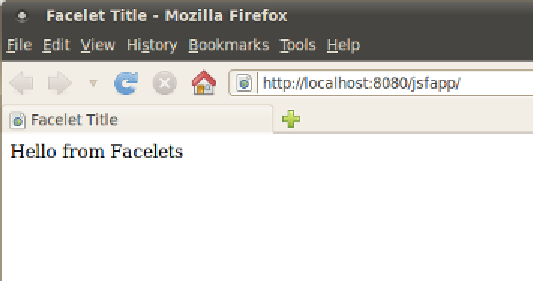Java Reference
In-Depth Information
xmlns:h="http://java.sun.com/jsf/html">
<h:head>
<title>Facelet Title</title>
</h:head>
<h:body>
Hello from Facelets
</h:body>
</html>
As we can see, a facelet is nothing but an XHTML file using some facelets-specific
XML name spaces. In the automatically generated page above, the following
namespace definition allows us to use the "h" (for HTML) JSF component library:
xmlns:h="http://java.sun.com/jsf/html"
The above namespace declaration allows us to use JSF specific tags such as
<h:head>
and
<h:body>
which are a drop in replacement for the standard HTML/XHTML
<head>
and
<body>
tags, respectively.
The application generated by the new project wizard is a simple, but complete JSF
web application. We can see it in action by right-clicking on our project in the project
window and selecting
Run
. At this point the application server is started (if it wasn't
already running), the application is deployed and the default system browser opens,
displaying our application's default page.
Modifying our page to capture user data
The generated application, of course, is nothing but a starting point for us to create a
new application. We will now modify the generated
index.xhtml
file to collect some
data from the user.



